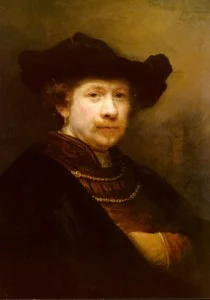Rembrandt Research Project
Rembrandt Harmenszoon van Rijn is known as one of the greatest artists in European history, with his contributions heralding in the Dutch Golden Age of the 17th Century, but the Dutch painter and etcher is also known for being the subject of great contention. He was so popular during his lifetime in the 1600s that many of his apprentices and followers imitated and copied his work, as did admirers after his death. As a result, art experts have found it difficult to agree upon which of his works should be attributed to Rembrandt and which should not.
When distinguishing between his work and that of others, Rembrandt’s extremely valuable paintings that sell in the multi-millions were rejected as imitations, copies or fakes and accepted as authentic like a see-saw, making their value difficult to distinguish.

Self-portrait in a Flat Cap; In 1982, this painting was dismissed by Christopher White (Royal Collection curator) as a fake. However, Van de Wetering listed it as authentic in Volume V of the Corpus.
Those who rely upon his work for income–art dealers, collectors, museum and institution workers, etc–have had their lives impacted. Adding to the confusion, the groups created to authenticate his work have also fallen under scrutiny. Their attempt to examine his works and create a catalog of art attributed to Rembrandt has failed, leaving the determination of his artwork where it began–on a piece by piece basis.